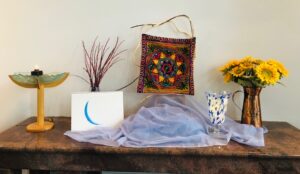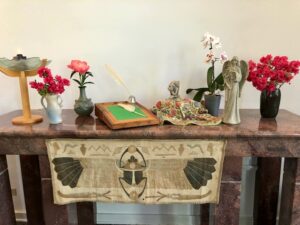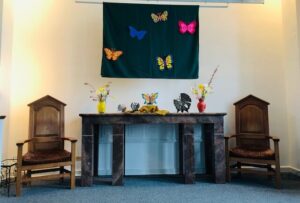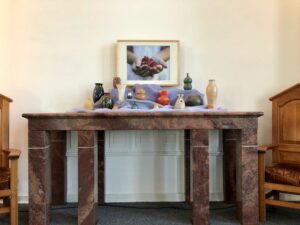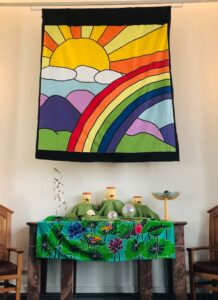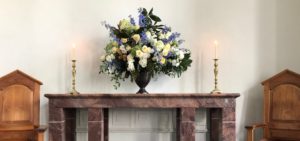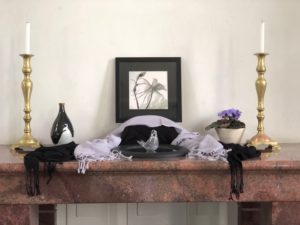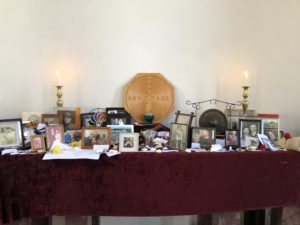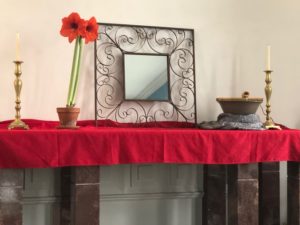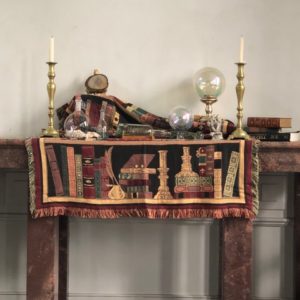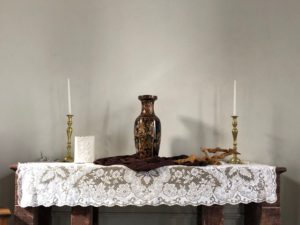I have always loved the story Leia just read. I first heard it years and years ago, and it touched me then. All these years later it continues to move me.
One of the reasons I so love that story is because I am that pot with a crack in it. I know only two well what it’s like to be so aware of the places that I have cracks, weaknesses, deficits, brokenness, less-than-ness … where I don’t think I’m good enough (or at least as good as that other person over there). I have a friend who used to say, “I don’t want to be perfect … just better than everybody else.” I know only too well those places where I’m not.
There are people who are better preachers than I am. There are people who are more compassionate and better listeners. There are a whole lot of people who are better organized. There are even people who know more than I do about comic books and the Batman. I know only too well the places where I’m cracked, where I can’t do something as well as I’d like to. As well as I think I should.
This being for many of us here the beginning of a new school year, I’m thinking back to how it felt to worry that I might not be able to do the work this year. To worry about whether or not this year I’d fit in. I know enough teachers to know that it’s not just the students who worry about these things. See … all of us have cracks, and all of us know it. Even if we pretend to ourselves, and try to convince others, that we don’t … we do. And all of us, all of us at least some of the time look at the people around us and wish we could hold water as well as they can.
Does anybody know what I’m talking about?
And sometimes … sometimes … we feel that those cracks are such a problem that we want to give up, or we do give up. We think, “I’m not good enough, and I’m never going to be good enough, so why bother even trying?” A lot of people stop drawing after a certain point, or singing, or dancing, because they don’t think they’re any good and won’t probably ever get any better. My dad couldn’t carry a tune in a bucket even if it was stapled to his forehead. But he loved music. He loved music. And he had three very musical sons, and I think he really, really wanted to be able to make music, like we could, instead of just listening to it. So later in his life he bought himself a keyboard, and a couple of “how to play the piano” books … and he never did anything with them. They sat in a closet. And I think he never even tried to learn to play because he was so convinced that he couldn’t. He saw that crack so clearly. He saw that crack so clearly that it was hard to see anything else.
Does anyone have a crack they’d be willing to share? Something you wish you could do, or think you’re supposed to be able to do, that you think you’re not good enough to do? <…> Yeah. We know only too well where we’re cracked, don’t we?
But I said that my empathy for the pot with the cracks was one of the reasons I love this story. The other is the wisdom of the water carrier. Because the water carrier knows that the pot’s cracks are just part of what makes that pot what – who – it is. The water carrier knows that the cracks aren’t anything terrible, aren’t anything to be ashamed of. The water carrier knows that the cracks are just … cracks.
Even more, the water carrier can see that the cracks can be a good thing. Yes, it’s true. The pot with the cracks can’t carry a full amount of water. But it can water the flowers along the path, and that’s something that the pot without the cracks can’t do. You might even say that that pot’s lack of cracks is, itself, a crack. And if I know what it feels like to have cracks, and to feel bad about it, then I have to also be willing to acknowledge that there might be something good in them, as well.
In traditional Japanese culture there’s a practice, and a philosophy, called kintsugi. In the west, if a bowl or a cup cracks, we pull out the crazy glue and try to put it back together so that the crack hardly shows. We feel great when we can repair it so that the cracks are hardly visible. Kintsugi is the practice of repairing broken pottery with a lacquer made with powdered gold, silver, or platinum. Instead of trying to hide they broken places, they highlight them, make them stand out, treat them as something special. Kintsugi is an expression of the idea that these cracks just show that the object has been used, the idea that the cracks are just a part of the history of the thing. It’s like someone who is proud of their wrinkles and their white hair because these are signs that they’ve lived and have some experience.
The water carrier knows that the particular cracks in that particular pot are just part of what makes it what it is, just as those parts that aren’t cracked are just a part of what it is. And I’m here to tell you this morning, to remind myself, that this is true of us, as well. We may not be “whole” in the way we think we’re supposed to be, in the way we think that other person, over there, is, but our cracks are part of the whole of us. And we wouldn’t be who we are without them.
And who you are, cracks and all, is beautiful … is powerful … is good. I mean it when I say each week that each of us – each and every single one of us – is essential for this community being what it is. Really hear that – you … you specifically … you with your cracks and everything … you are essential for this community to be what it is. Without you, things would be different … we wouldn’t be who you are.
Each fall we celebrate this truth through our In-Gathering Water Communion. Each of us is invited to bring a container of water – and if you forgot, or didn’t know, we have some extras up here. Each of us is invited to bring a container of water, and to come forward and pour it into this common bowl. Each of us bringing this symbol of ourselves; all of us making this symbol of our community. We all – each of us – come to this congregation and bring ourselves – strengths and weaknesses both – and we mingle them with one another, and together we create this community (which has its own strengths and weaknesses, of course, which has its own cracks, yet which nonetheless serves to nurture and encourage us all).
The pot only knows its cracks and despairs; the water carrier knows its possibilities. May we listen to the water carrier’s wisdom, so that we might see more clearly our own possibilities, and so that more beautiful flowers might bloom.

